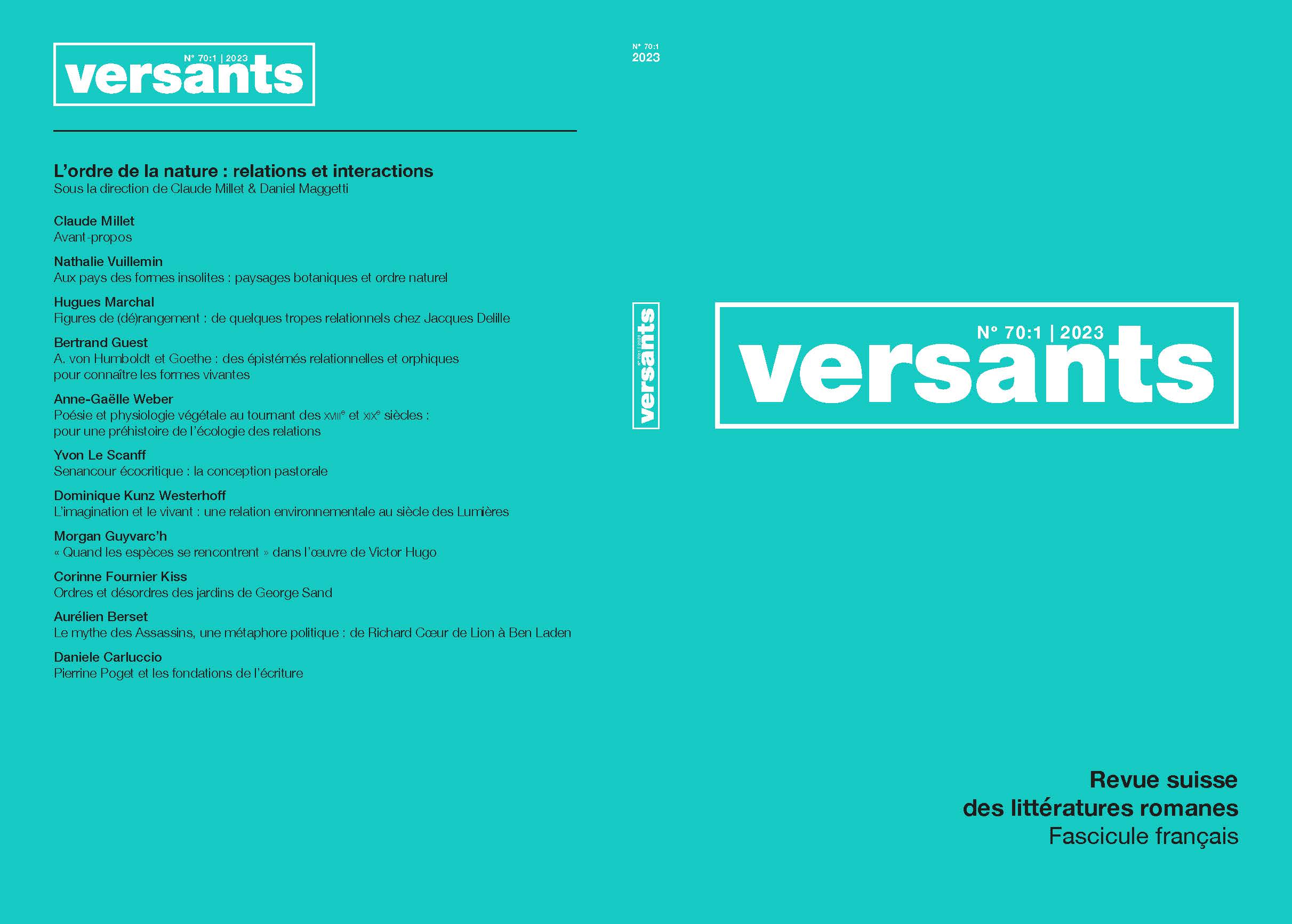L’imagination et le vivant : une relation environnementale au siècle des Lumières
DOI:
https://doi.org/10.22015/V.RSLR/70.1.7Abstract
After recalling the central role played by the imagination, in particular the romantic imagination, in the emergence of American ecocriticism and European ecopoetics, this article goes back to the last decades of the Enlightenment to analyse the way the imagination and the living are connected in a few French and Francophone discourses and theories. Based on a concise selection of medical treatises, philosophical essays and literary texts, in particular by Rousseau, it focuses on the transformations of a mechanistic imagination inherited from Descartes – a model which was particularly influential in the sciences of the 18th century, but which is problematic to think about the living – into a biocentric model which anchors the imagination in the fibers of the body and in a sensitive nature. According to this model, the imagination, as a hub of knowledge, is the instance par excellence of the relationship, because it inscribes the subject in its environment. From a perceived relationship to a relived relationship, from a heuristic relationship to an invented relationship, the imagination goes from a mechanical passivity to a generative activity that makes the experience of the world a knowledge of connections, invested with moral, social and political values. The Contemplation of Nature (1781) by Charles Bonnet also presents the imagination as an instance of critical reflexivity about the limits of human knowledge.
Keywords: ecocriticism, ecopoetics, imagination, romanticism, knowledge of the Enlightenment, Rousseau, Charles Bonnet.
Downloads
Downloads
Published
Issue
Section
License
Copyright (c) 2023 Dominique Kunz Westerhoff

This work is licensed under a Creative Commons Attribution 4.0 International License.



